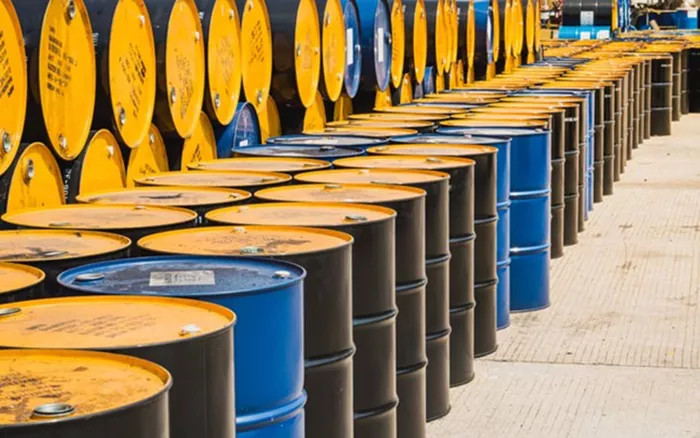Crude oil remains one of the most valuable resources in the global economy, primarily due to its versatility and the array of products derived from it. A single barrel of crude oil, which equates to 42 US gallons (159 liters), undergoes a complex refining process to produce several key products used in various industries. Here’s a detailed breakdown of what one barrel of crude oil can yield and how these products contribute to daily life and industrial applications.
1. Gasoline
Amount Produced: From one barrel of crude oil, approximately 19 to 20 gallons (72 to 76 liters) of gasoline are produced. This makes gasoline the largest single product derived from crude oil in the refining process.
Uses and Significance: Gasoline is the primary fuel used in internal combustion engines, powering vehicles such as cars, motorcycles, and small engines. It plays a crucial role in the transportation sector, enabling mobility and trade across vast distances. The production of gasoline supports both personal transportation and commercial logistics, making it a fundamental component of modern economies.
2. Diesel Fuel
Amount Produced: A barrel of crude oil yields about 10 to 12 gallons (38 to 45 liters) of diesel fuel. Diesel is a heavier, more energy-dense fuel compared to gasoline.
Uses and Significance: Diesel fuel is predominantly used in trucks, buses, and trains, as well as in various industrial machinery. Its high energy density makes it particularly efficient for heavy-duty applications and long-haul transportation. Diesel engines are favored for their durability and fuel efficiency, making diesel fuel essential for both freight and public transportation systems, as well as agricultural and construction machinery.
See also: How Much Low Grade Is 1 Crude Oil?
3. Jet Fuel
Amount Produced: From one barrel of crude oil, approximately 4 to 5 gallons (15 to 19 liters) of jet fuel can be refined. Jet fuel is a specialized product designed for aviation.
Uses and Significance: Jet fuel, including types such as Jet A and Jet A-1, is critical for powering aircraft engines. It supports commercial aviation, military operations, and cargo transport. The aviation industry relies heavily on jet fuel to maintain global connectivity and facilitate international trade. The production of jet fuel is essential for enabling efficient air travel, which is a cornerstone of the global economy and travel industry.
4. Heating Oil
Amount Produced: About 2 to 3 gallons (8 to 11 liters) of heating oil can be extracted from a single barrel of crude oil.
Uses and Significance: Heating oil is used primarily for residential and commercial heating, particularly in regions where natural gas infrastructure is limited or unavailable. It provides a reliable source of warmth and comfort during colder months. Heating oil is also used in industrial processes that require heating, making it an important energy source in various sectors. The production and distribution of heating oil are crucial for maintaining energy security and supporting regional heating needs.
5. Kerosene
Amount Produced: Approximately 1 to 2 gallons (4 to 8 liters) of kerosene are produced from one barrel of crude oil.
Uses and Significance: Kerosene serves multiple purposes, including as a fuel for jet engines, lamps, and certain industrial applications. It is used in aviation for its ability to withstand high altitudes and low temperatures. Additionally, kerosene is used in some developing regions for lighting and cooking, where access to electricity is limited. Its versatility makes it a valuable product in both aviation and everyday life.
See also: How Much Is 1 Barrel Of Crude Oil?
6. Liquefied Petroleum Gas (LPG)
Amount Produced: From a barrel of crude oil, around 1 to 2 gallons (4 to 8 liters) of LPG can be produced.
Uses and Significance: LPG, which includes propane and butane, is used for a variety of applications including heating, cooking, and as a feedstock for petrochemical processes. It is popular in both residential and industrial settings due to its clean-burning properties and portability. LPG is essential in regions where natural gas is not available, providing a vital energy source for domestic and industrial use.
7. Asphalt and Residuum
Amount Produced: The remaining portion of the barrel, roughly 8 to 10 gallons (30 to 38 liters), is used to produce asphalt and other heavy residuals.
Uses and Significance: Asphalt is a key material used in road construction, roofing, and waterproofing. Its durability and versatility make it indispensable in infrastructure projects. Residuum, the heavier fractions from the refining process, can also be used in various industrial applications. The production of asphalt and residuum supports infrastructure development and maintenance, contributing to the durability and safety of roads and buildings.
8. Petrochemical Feedstocks
Amount Produced: The remaining by-products and residuals from the refining process are used to produce petrochemical feedstocks, although the exact quantity varies.
Uses and Significance: Petrochemical feedstocks are essential for manufacturing a wide range of products, including plastics, synthetic fibers, and chemicals. These products are integral to modern life, found in everything from packaging and clothing to electronics and medical devices. The petrochemical industry relies on these feedstocks to produce items that drive innovation and convenience across various sectors.
Conclusion
The refining of one barrel of crude oil yields a diverse array of products that are integral to modern life and industrial processes. Each product, from gasoline and diesel to jet fuel and asphalt, plays a critical role in supporting economic activities, transportation, and infrastructure development. Understanding the outputs from crude oil highlights its importance as a versatile and valuable resource, influencing many aspects of daily life and industrial operations.
Related Topics:

